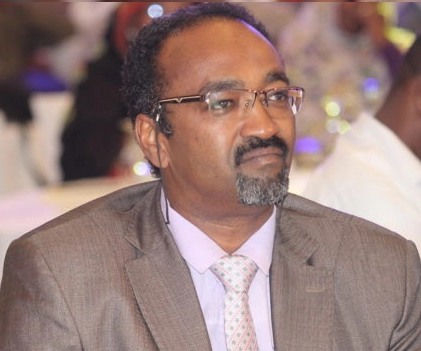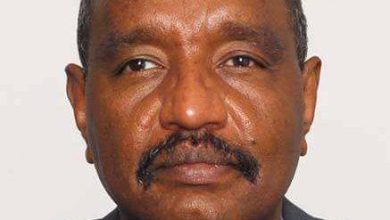Babnousa al-Qamir… and the Archers’ Hill

By Dr. Muzammil Abu Al-Qasim
The steadfastness of the Armored Corps in the fierce battles of Khartoum ignited the emotions of the Sudanese people, who became captivated by such remarkable resilience. The rallying of the people around the heroes of the Armored Division, led by Major General Dr. Nasr Al-Din Abdel Fattah and his soldiers, gave them even more courage, determination, and readiness for sacrifice and martyrdom.
These historic epics were repeated at the General Command, the Signal Corps, Kadoro, Hatab, Al-Ailafoun, Al-Mohandisin, and Wadi Sidna, before moving to Al-Fashir—the Sultan’s stronghold—where blow after blow was struck. Then came Babnousa al-Qamir, where the courageous warriors led by the valiant General Muawiya Hamad and Brigadier General Hassane Dermout are presenting dazzling chapters of resilience, bravery, and principled resolve.
I’ve never had the chance to visit Babnousa, but my heart became attached to it just as millions of Sudanese hearts became tied to Al-Fashir, the “Lion’s Mane,” where the warriors of General Mohamed Ahmed Al-Khader and the Joint Forces fight death fearlessly, confronting it with bare chests, faithful hearts, and hands that only leave the trigger for prayer!
In Babnousa, where the command of Division “11 in 2” is located—as my friend, the valiant engineer Ahmed Suleiman Ghor likes to describe it—the greatness of the Sudanese people shines through, and the courage and determination of the soldiers of God and the nation become clear as they confront the enemies and resist the despicable project of the wicked invaders and their sinful backers.
The thugs gathered their forces, flaunted their pride and arrogance, pushed in their combat vehicles, and backed them with thousands of motorcycles, thinking that breaking Muawiya and Dermout’s men was only a matter of time. They began their attack with intense artillery shelling, then advanced into the killing field—the death trap cunningly prepared by the army—which mowed down hundreds of them in a battle marked by remarkable resilience, sacrifice, boldness, and bravery.
As the dust of battle settled, it revealed a brilliant victory and a new triumph for the armed forces. The militia was forced to retreat, dragging behind them the tails of defeat and despair, leaving hundreds of dead and wounded. The sun rose again over beautiful Babnousa with a glorious victory, adding to the long and distinguished record of achievements by the armed forces in their mission to crush the rebellion and shatter the grip of the usurping militia.
The crushing defeat the militia suffered in the battle of al-Qamir was the primary reason behind the recent appearance of the rebel leader, who sought to raise the morale of his broken, retreating forces across all fronts. He appeared agitated and shaken, babbling meaningless words and making promises he himself knows are utterly impossible to fulfill.
The point of this entire narrative is that the dazzling victories achieved by the army—with all its divisions, mobilized troops, Mujahideen, Joint Forces, Sudan Shield Forces, al-Bara’ Forces, and others—should lead us toward greater unity and solidarity, not conflict and strife!
What is happening now—disputes over positions of power and bickering between factions of the same army during the peak of the Dignity Battle—is disheartening, regrettable, and dangerous. Extremely dangerous, in fact, because it fractures the ranks and ignites fire inside the box—inside the very same trench!
The participation of armed struggle movements in the transitional authority is a settled matter, stipulated in the Juba Peace Agreement. It is neither a gift nor a grant. Their insistence on their rightful share, as outlined in the agreement, is natural, expected, and even necessary. Thus, we cannot comprehend any targeting of these movements, especially since they stood on the right side of history, fought fiercely alongside the army and the people, contributed to liberating all central states from the filth of rebellion, and offered many martyrs in Sennar, the White and Blue Niles, Gezira, Khartoum, and even south of River Nile State.
On the other hand, we expect the leaders of the armed struggle movements—chief among them Jibril, Minawi, and Tambour—to rise above and deny the provocateurs any chance to sow discord or divide the ranks. They must understand the important reality that the agreement defined their share in power but did not assign them specific ministries. Therefore, we expect them to demonstrate the highest degree of flexibility, so as not to grant the agents of sedition their goals through any means!
The army—with all its divisions and allies—has achieved remarkable victories in the Battle of Dignity, inflicted misery on the rebels, and successfully expelled them from six full states (River Nile, Khartoum, Gezira, Sennar, White Nile, and Blue Nile). But the victory is not yet complete. The battle is still raging, and this is no time to abandon the Archers’ Hill in pursuit of spoils and plunder in the midst of the fight!
Disputes over positions and seats will open a thousand doors to defeat. We’ve already seen how the rebel leader and his supporters tried to fish in troubled waters and exploit the unjustified dispute over how the government should be formed.
In conclusion, I appeal to some of my fellow journalists—those who support the army and oppose the plot to hijack the Sudanese state—to rise above and be forces for good. I urge them not to dip their pens into any issue that may split the national ranks or weaken our fighters. I appeal to them, in the name of the homeland, our professional fellowship, and the ethics of our craft, to weigh their words with a scale of gold before publishing them. I appeal to them for the sake of the nation, the army, and all those bearing arms to protect Sudan and its people from the defilement of rebellion and to thwart the conspiracy to hijack the country. I appeal to them—nothing more!



